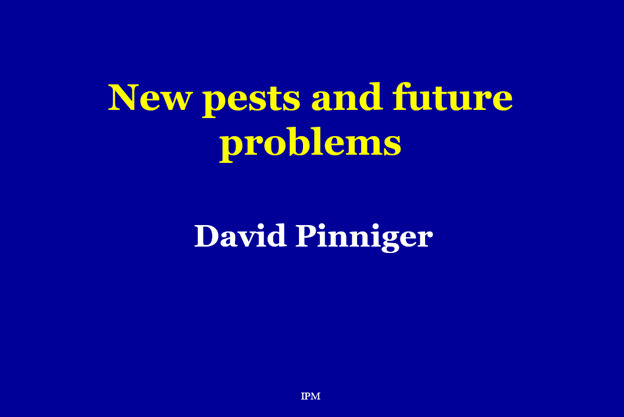Intro and Welcome
In 2025 the MuseumPests Working Group and the U.K. Pest Odyssey group continued their collaboration with their 2nd joint Pesty Presentation session presenting nine short talks on a wide range of cultural heritage IPM topics. The PowerPoint presentations are available below and a recording of the session is available on the MuseumPests YouTube channel.
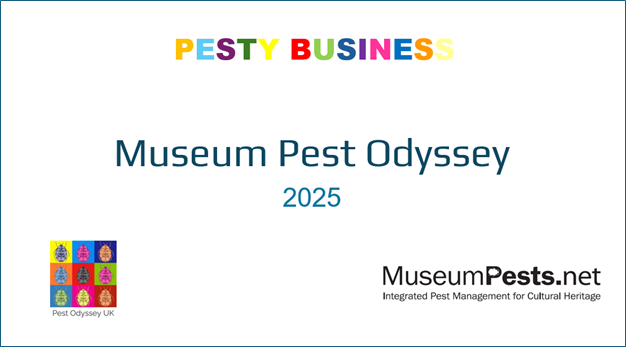
A new approach to IPM audits at V&A East Storehouse
Emma Rhodes, U.K.
One of the core tenets of IPM at the V&A is a quarterly collection, replacement and identification of adhesive pest traps, designed to gather passive, incidental data that provides an understanding of a particular area’s pest activity. However, the minimalistic architectural design of the institution’s latest site, V&A East Storehouse, has made this practice a challenge. Mesh flooring, metal racking and a large percentage of objects on open display ascribe to a ‘warehouse chic’ style and embed its objective of radical access into its aesthetic language, but they also have the potential to affect pest behaviour.
To mitigate against pests increasingly residing in the V&A’s collections as a result of the site’s display and storage methods, members of the Preventive Conservation team have resolved to change the way in which we conduct pest monitoring at V&A East Storehouse. This presentation will discuss our new approach to IPM on this site in response to the challenges posed by its architectural design. It will examine our move towards generating targeted over incidental data for quarterly pest audits, as well as the steps we are taking to implement and record pest activity at V&A East Storehouse.
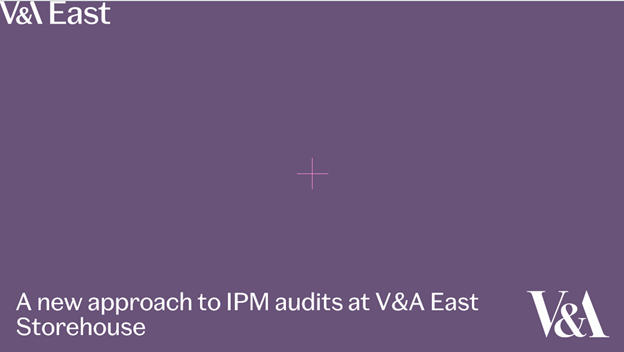
Establishing critical pest density at V&A South Kensington
Hebe Halstead, U.K.
Since the formation of the Preventive Conservation team at the V&A around 4 years ago, the team has undertaken all IPM-related responsibilities to mitigate potential object deterioration related to pest activity. Most notably, Preventive Conservators oversee the quarterly audit of adhesive blunder and moth pheromone traps in front and back of house spaces on all sites.
Although the collection, identification and replacement of traps is a constant practice to monitor pest activity at the V&A, the team recently reevaluated our approach to it. For the past year, the Preventive Conservation team increased the amount of blunder traps and decreased the amount of moth pheromone traps in front and back of house spaces at the South Kensington site to support our understanding of incidental pest activity. In doing so, we captured the site’s critical density per species in each space, producing a baseline understanding of localised pest activity in galleries, storages, studios and other back of house areas.
This presentation will explain the team’s approach to pest monitoring to determine critical species density in more detail. It will then discuss our findings and advocate for a more site-specific approach to the current understanding of critical pest density in the field.
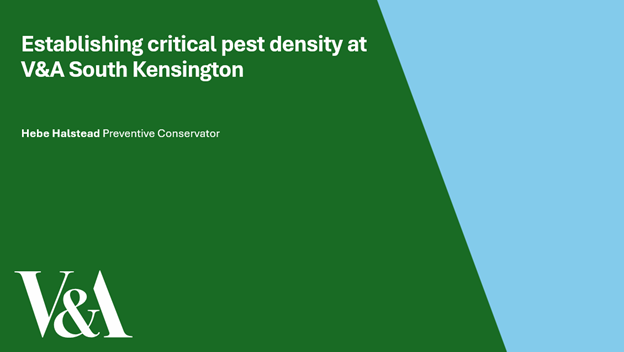
It takes a village: Growing a holistic approach to IPM challenges at MOTAT
Deeksha Bhardwaj, New Zealand
The Museum of Transport and Technology is in Auckland, New Zealand and was established in 1964. MOTAT’s extensive collection encompasses aviation, road transport, steam power, communications and a historic village. The collection has grown to over 300,000 items. Some of the highlights from the collection include iconic planes like the Solent and Sunderland flying boats and the Lancaster bomber.
MOTAT’s collection is displayed and stored across three sites in buildings that have a variety of different designs and functions. Different buildings have different abilities to maintain set temperatures and humidities and, as a result, some buildings and collection are more prone to pest and mould attack than others. Collection care is an ongoing challenge for items that are more susceptible to biodeterioration, particularly textiles, wood and archival collections.
Over the past few years, the IPM workflow at MOTAT has only gotten wider in scope due to extreme weather changes, recent flood events and leakage in buildings resulting in severe mould outbreaks and borer infestations.
To address this, we have been developing a holistic approach through our IPM program to mitigate the effects of environmental and pest damage to collections and collection spaces. Making use of simple tools like communication, teamwork, education and good housekeeping, we have achieved some encouraging results. This presentation will discuss our current methods and future pathways for a sustainable MOTAT-customised IPM programme.
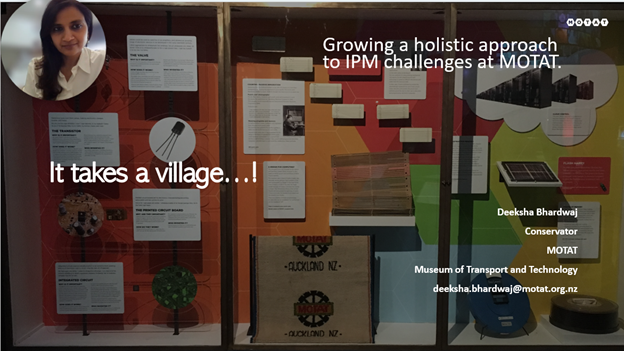
From Spreadsheets to Strategy: Embedding Pest Management in Museum Practice
Georgia Miller, New Zealand
At Tāmaki Paenga Hira Auckland War Memorial Museum, we have adopted a museum-wide approach to Integrated Pest Management (IPM), underpinned by the principle that pest management is a shared organisational responsibility. Over time, we have established a cross-departmental network of trained “pest checkers” who contribute to a structured monthly monitoring programme, enabling staff beyond Collection Care to take an active role in preventive conservation.
Central to this programme is a custom-built Excel-based monitoring tool that functions as the core platform for recording, analysing, and communicating pest activity across the museum. Developed in-house to maximise accessibility and local relevance, the tool incorporates automated functions, visual summaries, and standardised metrics—including the Pest Occurrence Index (POI)—to support data interpretation and risk assessment. It has strengthened preventive conservation by improving data consistency, reducing admin, and making pest information accessible and shareable across teams.
This presentation draws on recent research into the development and institutional impact of the tool, offering an Aotearoa-specific case study of how international IPM standards can be successfully adapted to local museum contexts using existing staff expertise and readily available tools. I will share insights into the tool’s design and implementation and reflect on how improved data visibility and broad staff engagement have helped shift pest management from a siloed task to a collaborative, museum-wide practice.
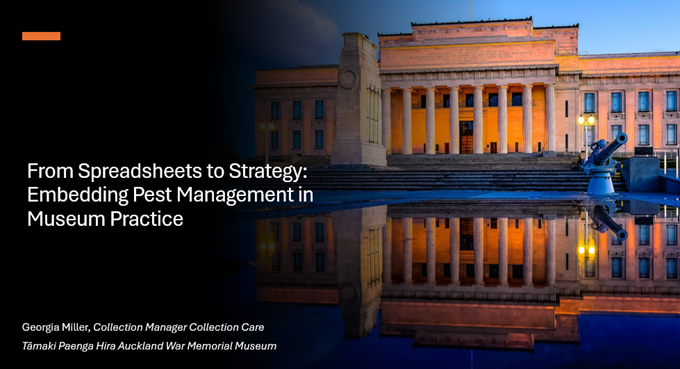
How to get the most out of the MuseumPests Airtable
Patrick Kelley, U.S.
Learn how to filter, sort and ways to get the most out of the MuseumPests.net Image Gallery and dynamic Pest Fact Sheets.
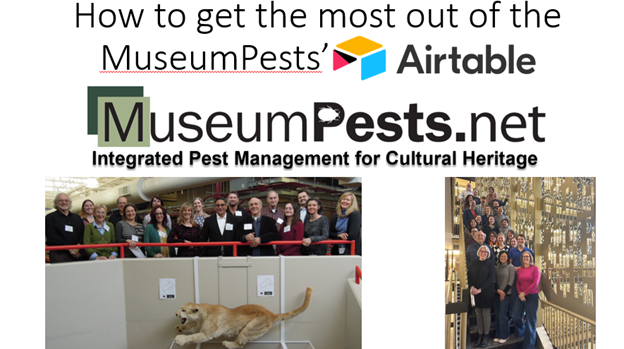
Airtable as a Collaborative Tool for Integrated Pest Management in Cultural Heritage Institutions
Colleen Grant and Meghan Brady, U.S.
The Collection Management department of The New York Public Library maintains integrated pest management programs across nearly 200,000 square feet of space where collections are used, stored, and cared for within three Research Libraries in Manhattan and an off-site facility in Queens. In 2021, they started using Airtable, a cloud-based relational database platform, to more effectively manage and analyze all IPM data and to allow team members across multiple sites to use and add information to the database simultaneously.
The Airtable database they built serves as a central location for all IPM-related data and is tailored to IPM for cultural heritage collections. It is a repository for trap monitoring data, allows for data collection from multiple locations and teams, and includes tools for data analysis, visualization, and reporting. It also contains tables to track pest sightings outside of regular monitoring as well as pest-related events (infestations, facilities work, establishment of new monitoring programs, treatments, etc.). It incorporates reference libraries of pest types and treatment options, using resources from MuseumPests.net as a foundation, as well as a housekeeping log.
This presentation will discuss what inspired NYPL to create this database, what it is used for, and how it has become an effective tool for communication and collaboration with Facilities and other partners. It will also include a short demonstration of how the database works as well as instructions for accessing a free template version.
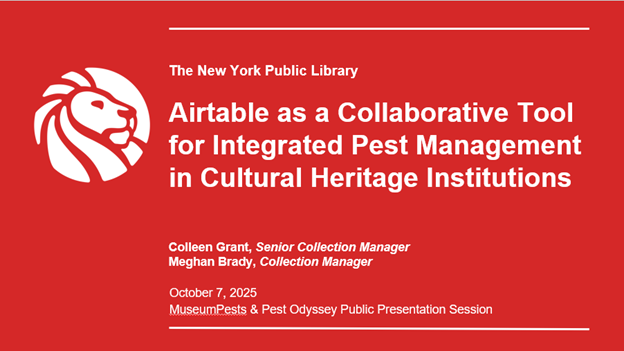
Friendly Bacteria Against Insects
Jaap van der Burg, Netherlands and Belgium
Since 2018 we are using friendly bacteria to fight fungus and mould spores in archives, storages and historic houses. The results are positive, tests show a strong decline in spores in these spaces. The bacteria not only consume spores but alle small organic dust. In commercial cleaning of offices is shown that the frequency is 1/6th of what it was before.
Insects as dust lice, silver fish, other Zygentoma and such, all are attracted by this same dust. The spaces become less interesting for insects. Keeping it clean (Hygiene) becomes easier. So indirectly the bacteria help battle insects as well as fungus. We are currently working on collecting data to confirm (or contradict) our expectations.
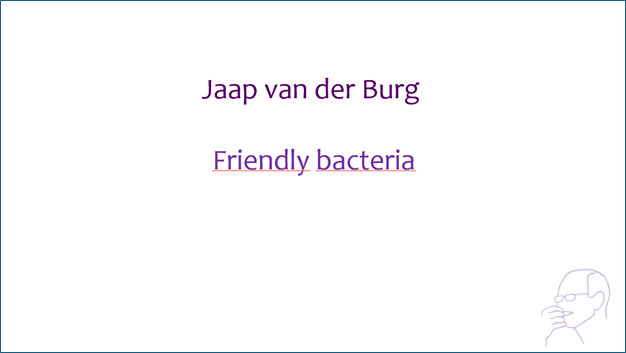
Developing rodent-proof covers for blunder traps
Anais Ellis, Charlotte Ridley, and Andrew Hughes,
At the Horniman Museum and Gardens, occasional findings of mice in blunder and pheromone traps during quarterly Integrated Pest Management (IPM) checks, prompted us last year to seek a sustainable, long-term solution to address this problem. Initially as a preventive measure, and to ensure compliance with legal and ethical standards, we experimented with alternative trap types and single-use modifications to standard blunder traps. While these modifications successfully prevented mice from being caught, we observed that they either reduced typical insect pest catch rates in our gallery spaces or were too resource-intensive to implement routinely.
Following these observations, over the past year we have focused on exploring the design of a rodent-proof cover for standard blunder traps. The cover needed to meet several criteria; thin enough to keep the blunder trap close to the ground, strong enough to protect the trap, and flexible enough to be scored, folded into shape, and durable against repeated openings. This design aimed to create a reusable cover without adding significant time or effort to our quarterly IPM trap checks. To meet these requirements, we chose to experiment with Melinex, a known archival grade material, and use laser cutting to create precise, consistent covers for blunder traps across our galleries.
In this presentation, we will share how the project progressed from design to manufacture, including the material choices, design iterations, and challenges encountered along the way. We will also share preliminary results from testing the prototype blunder trap covers.
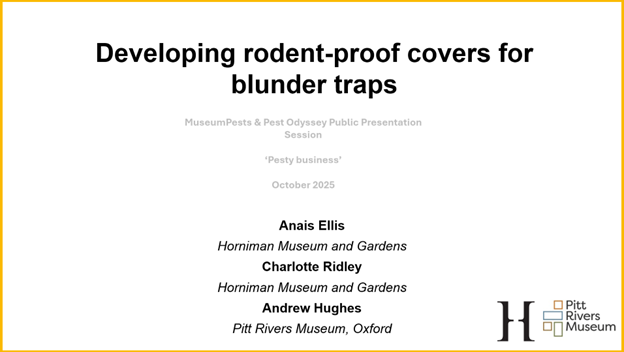
New Pests, New Challenges
David Pinniger, U.K.
There are many useful guides to the identification of insect pests, including the English Heritage pest poster and the websites Whatseatingyourcollection.com and Museum Pests.net. However, we live in a changing world and there is evidence to show that some species are now able to thrive in places that were previously inhospitable. In the UK, horticulture and agriculture are not alone in facing new threats as we have challenges of our own in heritage. The spread of Guernsey carpet beetle Anthrenus sarnicus and the Brown carpet beetle/ Vodka beetle Attagenus smirnovi in the late 20th Century are well documented. More recently this Century has seen the introduction and rapid spread of the grey silverfish Ctenolepisma longicaudatum. Less well known is the recent increase in occurrence of the Australian carpet beetle Anthrenocerus australis and Berlin beetle Trogoderma angustum. Both of these species may well be under reported as both the adults and larvae are easily confused with other pest species. Some woodborer beetles such as Oligomerus ptilinoides and Hylotrupes bajulus may also be a future threat to building structures. Fortunately, communicating these changes is now much easier through the internet, but it is essential that such information sources are verified as there is much incorrect information to mislead the unwary. Effective IPM depends upon accurate identification of pests. The Pest Odyssey Group in the UK and Museums Pests in the USA must play a key part in this in the future.
